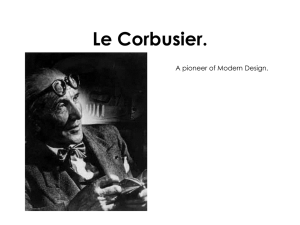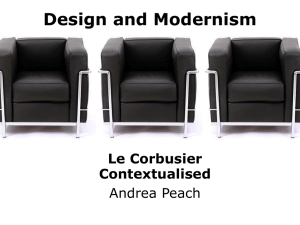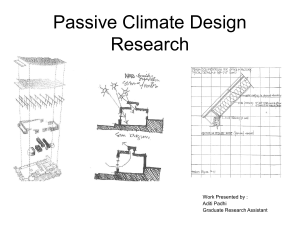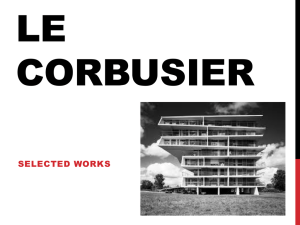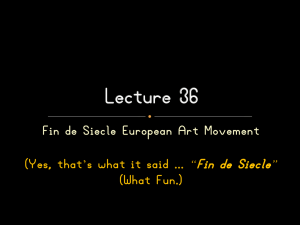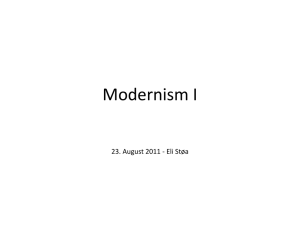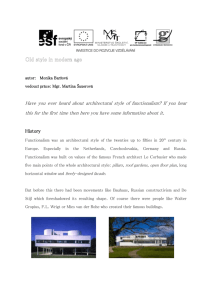the automobile in le corbusier's ideal cities
advertisement
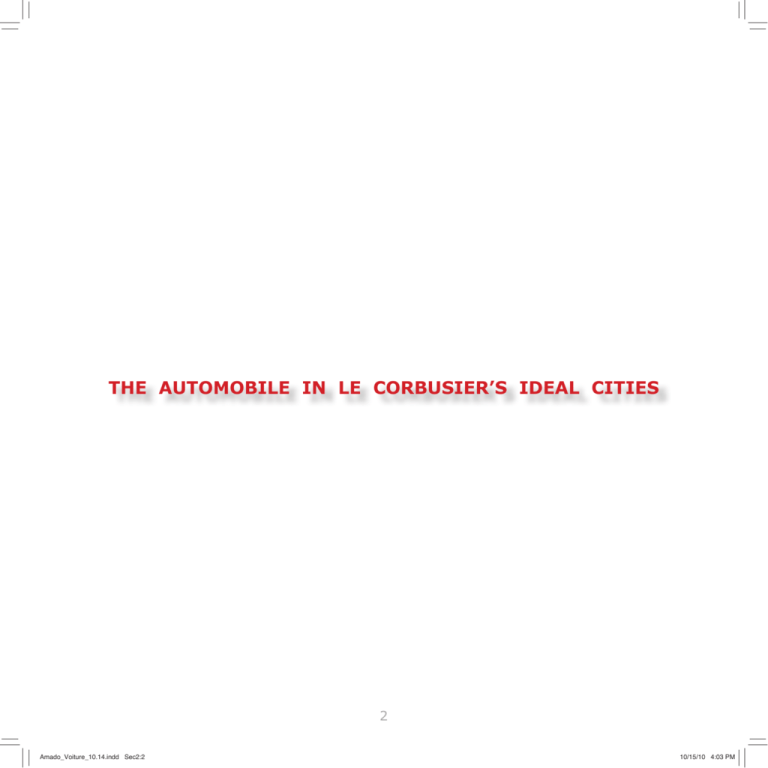
THE AUTOMOBILE IN LE CORBUSIER’S IDEAL CITIES 2 Amado_Voiture_10.14.indd Sec2:2 10/15/10 4:03 PM The conquest of speed has always been the dream of mankind, cities as futuristic utopias in which the automobile, then seen yet it has only taken shape in the last one hundred years. Before as a symbol of modernity and progress, was an obsessive and then the stages in the conquest of speed were incredibly distant omnipresent feature. He saw the automobile as a true “transport one from the other. For an immense period of time, man could machine,” running along large fast roads, and believed that the only move at the rate at which his own limbs would take him, need to accommodate it would radically affect town planning. and all his progress, apart from sails, consisted in using the As the architect commented in one of his numerous quotes, speed of animals.”1 This is how in 1924, while discussing ideal the old European cities were not addressing the modern reality metropolises in the pages of his book City of Tomorrow and Its or its urgent transport requirements: “The automobile is a new Planning, Le Corbusier proclaimed his unconditional faith in the development with enormous consequences for the large city. speed of automobiles. The city is not ready for it. . . . I tell you straight: a city made for speed is made for success.3 Fifteen years earlier the poet Filippo Tommasso Marinetti had already caused indignation in the cultural and artistic world with Nor in his opinion were the town planning “academics,” anchored his Futurist Manifesto in which he referred to the automobile as as they were in a historical concept of town planning, conscious a fascinating feature of the newly emerging twentieth-century of the situation and the seriousness of the problem: “The society. “A racing car with its hood adorned with great snake- automobile has arrived, the number of accidents will multiply like tubes of explosive breath . . . , a roaring automobile, that along this old ‘dirt track’ elevated to the status of highway or seems to run on shrapnel, is more lovely than the Victory of local road. Its brutal curves are also dangerous. The decision is THE AUTOMOBILE IN LE CORBUSIER’S IDEAL CITIES Samothrace.”2 In the twenties Le Corbusier designed large I “Speed lies on this side of mere dreams: it is a brutal necessity. 2/ Published in the newspaper Le Figaro on February 20, 1909. 1/ Le Corbusier, City of Tomorrow and Its Planning (New York: Dover Publications), 1987, p. 190. 3/ Le Corbusier, City of Tomorrow and Its Planning, p. 179. Le Corbusier’s proposal for a modern city of three million inhabitants, with no fixed location, 1922. (FLC) 3 Amado_Voiture_10.14.indd Sec2:3 10/15/10 4:03 PM taken to widen and rectify. The two banks are expropriated. . . . Result: automobiles continue to dangerously disturb a regime perfectly created for the happy times gone by, for a regime of living, not of moving. . . . Some town planning specialists have sought and proposed solutions that are often closed. The discussion is about traffic: the stream of horse-drawn carts has become a flood of cars. Therefore, dimension, width, and classification: the pedestrian, the car.”1 Le Corbusier did not have any qualms about stating in an article that the director of Peugeot “sees in the automobile the vital and brilliant realization of a thousand-year-old dream of humanity.”2 In fact, the architect, being an able publicist of his own ideas, spent much of the twenties trying to persuade several industrialists involved in the world of automobiles, Model of the 1925 Voisin Plan by Le Corbusier for a new Paris. (FLC) Citroën, Michelin, and Peugeot, among others, to sponsor his projects. He tried to persuade them using the argument that the automobile would play an indisputable role in the cities of the future, influencing developments not only in town planning but in society as a whole. Le Corbusier was convinced that since these magnates were going to be the big winners from the new initiatives they were precisely the people who should be supporting them. “As it is the motor-car that has completely overturned all our old ideas of town planning, I thought of interesting the manufacturers of cars. . . . I saw the heads of the Peugeot, Citroën, and Voisin companies and said to them: The motor has killed the great city. The motor must save the great city.”3 The most receptive of all was Gabriel Voisin, the eccentric owner of the now defunct automobile and aeroplane company Voisin, 1/ Conference in Buenos Aires in 1929. 2/ Stanislaus Von Moos, Le Corbusier, une encyclopédie (Paris: Centre G. Pompidou, 1987), p. 264. 3/ Le Corbusier, Toward an Architecture (London: Frances Lincoln, 2007), p. 277. In this drawing, presented to the CIAM II Conference in 1929, Le Corbusier compared the evolution of the price of housing with the cost of living index, the automobile industry in general, and Ford automobiles in particular. (FLC) 4 Amado_Voiture_10.14.indd Sec2:4 10/15/10 4:03 PM finance not only the Pavilion of L’Esprit Nouveau by Le Corbusier but also his town planning ideas for a new Paris, the famous Voisin Plan.1 In fact, the Paris proposal was initially offered to the popular tire company Michelin who turned it down. This offer to Michelin, charged with intention, was made with the aim of trying to counteract the somewhat elitist image that had been created by the Voisin brand sponsoring the town planning revolution contained in Le Corbusier’s Radiant City.2 Arguments used to persuade the automobile industrialists to sponsor new city projects, projects that split the city into different areas, each with its own specific functions, were focused on the THE AUTOMOBILE IN LE CORBUSIER’S IDEAL CITIES activities and entering into prefabricated housing. Voisin would I who at that time was interested in diversifying his business fact that a large number of automobiles would be needed to meet the transport needs of the fast highways in the new macro cities. In fact, the impressive perspective views from his town planning projects show a multitude of automobiles happily driving along wide avenues, this being a few years before traffic congestion started to become a regular feature in the historical European cities: “The current situation of confusion between pedestrians and the automobile must disappear forever. The automobile and the pedestrian must be separated. The current network of streets is old-fashioned, created in part before the appearance of cars in the cities . . . whose dimensions and textures are due to the fortifications that limit, in successive bands, the land that can be Modern city of three million inhabitants, 1922. (FLC) developed. . . . The restructuring of the automobile network has to be thought about on a new scale, a scale involving speeds of one hundred kilometers per hour.”3 It is interesting to note that in the early stages of his professional career Le Corbusier was more interested in, and in fact better known at an international level for, his radical and audacious 1/ If the longed-for cosponsorship had materialized it would have certainly been called “The Peugeot, Citroën, and Voisin Paris Plan.” 2/ Von Moos, Le Corbusier, p. 196. 3/ Le Corbusier, The Four Routes (London: Dobson, 1947). 5 Amado_Voiture_10.14.indd Sec2:5 10/15/10 4:03 PM approach to town planning than for his limited activity as an architect, especially given that he had few constructed works. While his long-term influence on town planning is not as obvious as his impact on the world of architecture, one must not forget that his theories about zoned cities, with the presence of the car as an absolute reference, were truly revolutionary and controversial in the first half of the twentieth century. For Le Corbusier, the venerated and idealized automobile would not only solve the problems of the cities, it would also permanently revitalize rural areas: “The railway converted the cities into true magnets, they filled and swelled without control and the countryside was progressively abandoned. It was a disaster. Luckily the automobile, through the organization of the roads, will reestablish this broken harmony and start the repopulation of the countryside, which, however paradoxical it seems, is the main problem for town planning.”1 At the time of the first Le Corbusier town planning proposals, traffic was already starting to cause serious problems in cities such as Paris and New York. In 1924 the architect stated that “the congestion is so complete that in New York businessmen leave their automobiles in the outskirts and take the subway to the office. An amazing paradox!”1 1/ Le Corbusier, The Four Routes. 1/ Ibid. 6 Amado_Voiture_10.14.indd Sec2:6 10/15/10 4:03 PM THE AUTOMOBILE IN LE CORBUSIER’S IDEAL CITIES I A perspective view of a modern city of three million inhabitants, 1922. (FLC) 7 Amado_Voiture_10.14.indd Sec2:7 10/15/10 4:03 PM Le Corbusier’s visit to Fiat in Turin Le Corbusier’s attraction to everything automobile related led him to the Lingotto factory in Turin where he was invited to drive a Fiat Balilla around the test track installed on the roof of the building. This visit would lead to the confirmation of his dreams about ideal cities with fast freeways built across the flat roofs of endless apartment blocks. Immediately after his visit Le Corbusier, still euphoric, wrote with passionate and vehement praise: “The Fiat factory is an advance for town planning in the new mechanized age. The freeway on the roof, for example, offers evidence of the modern technical possibilities. It is not a dream, it is reality. Certain cities, such as Geneva, Algiers, and Rio de Janeiro, could The unusual Fiat test track in the twenties (mentioned by Le Corbusier in Toward an Architecture and visited by him in 1934), located on the roof of the Lingotto factory in Turin, a Matté Trucco building that has recently been restored by Renzo Piano. (FIT) be saved from the disaster that threatens them by constructing large freeways at great height (like the Fiat track) on standard structures, allowing the cities to provide housing for a large population in optimal conditions. I believe in this. I see this as the solution. Today the visit to Fiat has confirmed it for me. Why then do the responsible authorities not recognize that it is time to start constructing the city with the same faith, the same courage, and the same temerity shown by the bosses at Fiat? In addition, Fiat has made many suggestions that are interesting for the country both in terms of architecture and town planning.”1 1/ Willy Boesiger and Oscar Storonov, Le Corbusier, Complete Works (Princeton: Princeton Architectural Press, 1994), p. 25. 8 Amado_Voiture_10.14.indd Sec2:8 10/15/10 4:03 PM main supporter of both the city designed around traffic needs and architecture inspired by industrial processes.”1 Seventy years after this visit to Turin, following a series of successive periods in which his controversial theories on the development of the modern city were equally praised and reviled by town planners, Rafael Moneo suggested reviewing the relationship between the automobile and the architecture proposed by Le Corbusier from a contemporary point of THE AUTOMOBILE IN LE CORBUSIER’S IDEAL CITIES mechanical world “led him to become the I The fascination of the architect with the view: “Architecture must also assume its role in assimilating and integrating the automobile, finding a place for it in its agenda. I don’t Elevated freeways on the roofs of endless apartment blocks were habitual images in Le Corbusier’s town planning projects such as these perspective views for the Obus Plan for Algiers from 1932. (FLC) think anyone would be surprised if I were to say that architecture has so far made very little effort to try to coexist with the automobile. . . . Contemporary architecture ‘mistreats’ the automobile, perhaps with the acquiescence of society. . . . Recalling the importance that Le Corbusier attached to the automobile seems to me to be a very relevant and useful reflection at the beginning of symposia like these. . . . Le Corbusier thought that the car should always be present in his architecture.”2 1/ Fernández-Galiano, “Obras con motor,” El País, March 18, 2006. 2/ Various authors, Automoción y Urbanismo: Europa—La ciudad ideal (Madrid: Fundación Barreiros, 2004), pp. 19–20. 9 Amado_Voiture_10.14.indd Sec2:9 10/15/10 4:03 PM Le Corbusier’s visit to Ford in Detroit By the thirties Le Corbusier had become a famous intellectual A few days later he popped up in Detroit, the automobile capital and his reputation as a prestigious speaker meant he was of the United States, where he requested a visit to the Ford invited all over the world to explain his town planning theories assembly plant. In Detroit he was presented “as probably and talk about his few constructed works. Toward the end of the greatest architect in the world who had done practically October 1935 the architect, then 48 years old, traveled to the nothing.”3 Le Corbusier stated that Detroit was “the logical city United States for the first time at the invitation of the Museum for the production of the house of tomorrow, the prefabricated of Modern Art in New York for an exhibition that toured the United States for more than two years. During November and December of that year Le Corbusier visited various cities in which he was received with both curiosity and interest,1 giving lectures in universities such as Yale, Princeton, and Harvard. His busy agenda also took him to Philadelphia, Kansas, Chicago, Detroit, and the city that made the greatest impression on him, New York. “When I saw the Empire State Building for the first time I wanted to lie down right there, on the sidewalk, and look up forever.” Here he made provocative statements, immediately printed by the newspapers, such as: “Skyscrapers Not Big Enough. Thinks They Should Be Huge and a Lot Farther Apart” or “Skyscrapers without a city plan were absurd.”2 The letter he sent to Kenneth Stowell, editor of American Architect, is interesting: “The New York skyscraper is only negative. . . . Build the skyscrapers bigger and so that they can be more useful, place them in the middle of a park and they will revitalize a large zone. . . . The pedestrians will be free to move about in the parks that cover the whole ground area and the automobiles will move from skyscraper to skyscraper at 85 miles an hour on elevated oneway roads placed at a great distance from each other.” 1/ Stéphane Potelle, Le Corbusier Plans 1933–36 (Paris: CodexImages International, 2005), p. 8. Frank Lloyd Wright refused to meet him, despite being invited to do so. 2/ New York Herald Tribune, October 22, 1935, quoted in Mardges Bacon, Le Corbusier in America (Cambridge, Mass.: MIT Press, 2001), p. 38. Le Corbusier arriving at the railroad station, Detroit, at the end of November 1935. (FLC) 3/ Ibid., p. 105. 10 Amado_Voiture_10.14.indd Sec2:10 10/15/10 4:03 PM THE AUTOMOBILE IN LE CORBUSIER’S IDEAL CITIES I The revolutionary Cord 810 by Gordon W. Buehrig was a vehicle ahead of its time, full of novel technical features such as front-wheel drive and retractable headlights. This model, an example of which was owned by the American architect Frank Lloyd Wright, was presented at the New York Auto Show in 1935, an exhibition visited by Le Corbusier during his stay in the United States. According to Autocar magazine, in 1936 it was “currently the least orthodox automobile in the world.” efficient mass-production house. As Bacon states, “Moreover, this visit Le Corbusier sent a letter to the prestigious American the automobile manufacturer and not the architect would be automobile designer Gordon W. Buehrig, to whom he had been responsible for that task since he was familiar with the methods introduced at an exhibition, insisting that the task of mass of production.”1 producing housing should be carried out in the United States because it was the country best equipped with the technology The powerful experience of seeing a new automobile come off and manpower to do this. That same year Buehrig had launched the Ford production line every 45 seconds fascinated him: “I am his revolutionary Cord 810 automobile. It was an aerodynamic immersed in a type of astonishment,” and confirmed the validity model considered to be incredibly sophisticated and ahead of of his theories about the cities of the future, the mass production its time and it would later be selected as an exemplary object of housing, and the indispensable automobile. Some weeks after of design for the exhibition “Eight Automobiles” held in the Museum of Modern Art in New York in 1951. 1/ Ibid., p., 102. 11 Amado_Voiture_10.14.indd Sec2:11 10/15/10 4:03 PM

